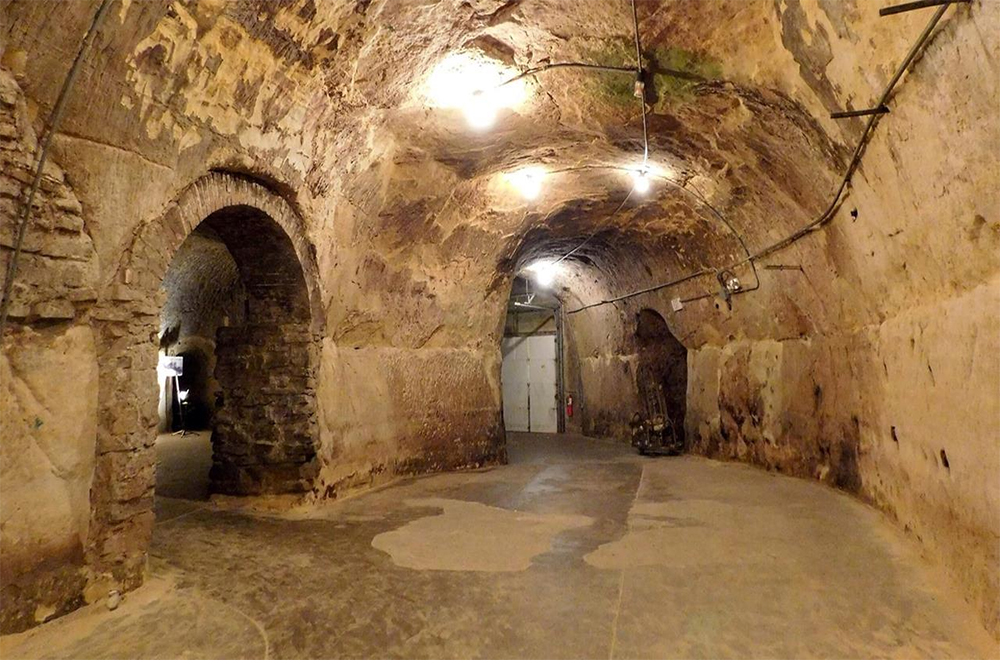There’s something inherently transporting about swing dancing, which manages to feel both quaint and modernly accessible no matter the port or town. But pair a date night with a stage already steeped in a twisting and ornate history, and the time-traveling effect becomes complete.
That’s the magical feeling of the Wabasha Street Caves, an eclectic Minnesota event hall built from the sandstone cliffs on the shore of the Mississippi River, right across from downtown St. Paul and near Minneapolis. Each Thursday evening, dozens — sometimes hundreds, employees say — of locals and travelers gather for a night of swing lessons and dancing.
But it’s the spellbinding past of the venue that makes it more than your typical date-night foray.
RELISH THE ALLURE OF BEING UNDERGROUND, WHERE GHOST STORIES ABOUND WITH THE ERRATIC FLICKERING OF LIGHTS.
Begin with an 11 a.m. tour of the caves (tickets are $12). The guides keep the conversation light and humorous, and the air is damp and cooling. Plaster walls and tiled floors fill the first few caves, which were carved out of sandstone in the 1840s and mined for silica, a glass-making component.
Most of that was gone by the time Albert Mouchnotte, a French immigrant, arrived in the early 1900s. Smitten by the caves, which reminded him of those beneath Paris, Mouchnotte and a group of French investors started a mushroom-growing business in their depths. During Prohibition, the caves were used as a speakeasy — and as a popular haven for gangsters (St. Paul police chief John O’Connor pledged protection if they kept their crimes out of the city). As such, notorious gangsters of the era, from Fred and “Ma” Barker to John Dillinger, reportedly frequented the space. According to Wabasha Street Caves guide Blake Wanger, one mobster, Alvin “Creepy” Carcass, used to say that “if you were looking for a ‘guy,’ you looked in two places: prison or St. Paul.” The ornate fireplace still has bullet holes in its mantel, the results of a poker game between mobsters that turned ugly, and which has led to rumors of three bodies being buried in the cave’s depths.
The caves have lived on: as a restaurant nightclub Castle Royale, a ’70s disco and a storage facility for Land O’Lakes cheese and for debris from St. Paul homes washed away by flooding. And while few visit the Twin Cities solely for the caves, the weekly $8 swing sessions — complete with a speakeasy password “Gus sent me” and live music from local big band ensembles — are a great escape for those looking to shake up the classic twist and shout.
Relish the allure of being underground, where ghost stories abound with the erratic flickering of lights. The coolness of the caves soon gives way to the warmth of movement between you and your partner, the acoustics so sublime that even a well-delivered whisper travels across the room like an arrow. The music, on different days led by the likes of the Moonlight Serenaders and the Minnesota Jazz Orchestra, embraces the big band style of the cave’s olden days, bringing you back to where you began — dancing into the past.

